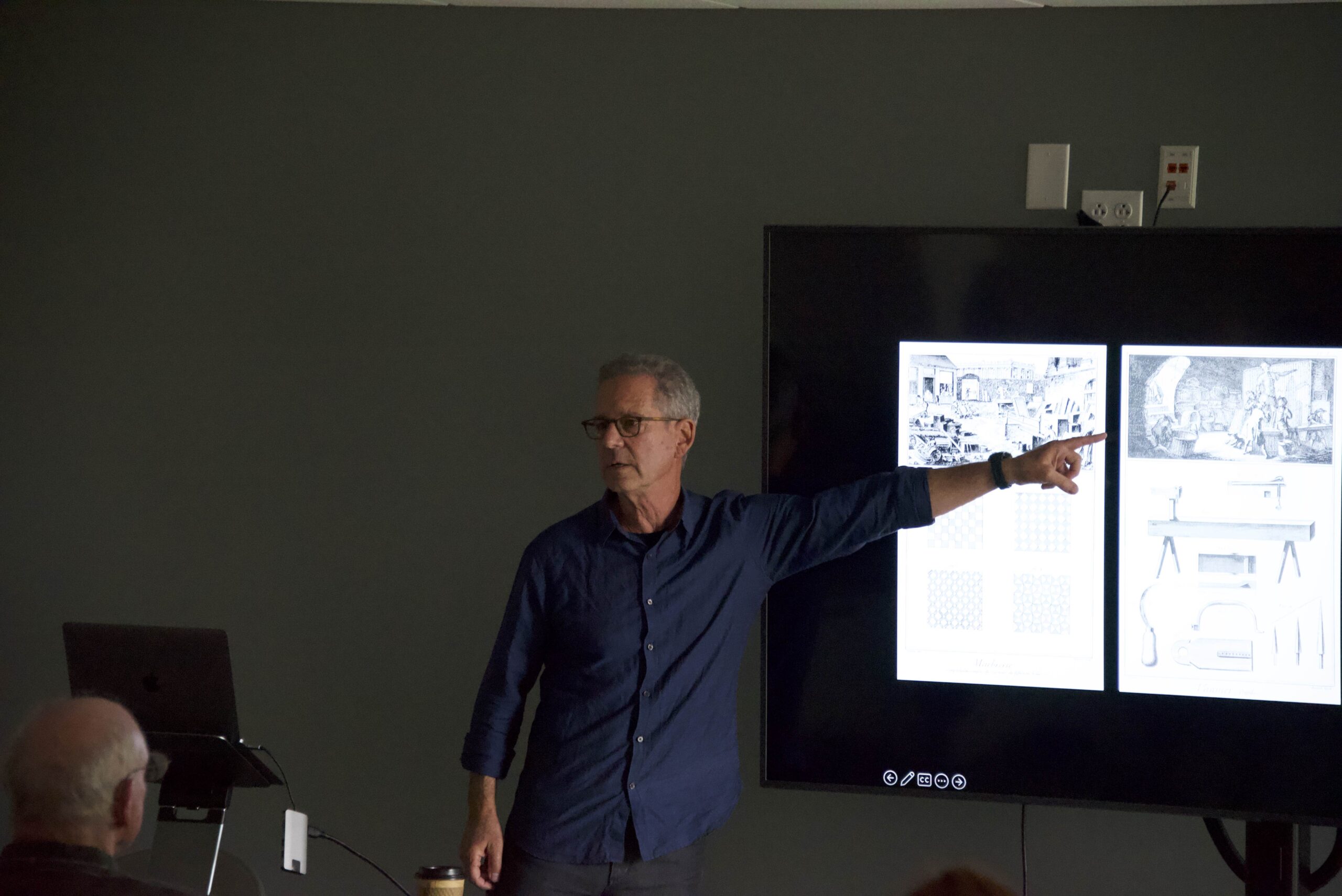Botnick discusses the creation of artist books
September 23, 2022
 Collin Tardio
Collin TardioProfessor of Art at Washington University in St. Louis and publication designer Ken Botnick spoke on the creative process and structure of artist books on Wednesday afternoon. The talk was part of the “Bowdoin and the Book” lecture series in the new Special Collections Learning Lab in Hawthorne-Longfellow Library.
An artist book is a genre that focuses on the structure, construction and presentation of information within a book rather than its content. These books, which function as art pieces as opposed to literature to be read, are usually handmade and utilize unique materials and construction methods.
“Like poetry, the idea for an artist book can come from even the simplest, slightest thing … What’s important is to allow yourself the luxury to notice—to dwell and to allow whatever it is to deepen your understanding of the world,” Botnick said. “The practice, whether it’s writing poetry, painting or throwing pots, is one way of deepening that understanding, that connection. My practice is making books. The book is my lens to explore the things of the world I see.”
Botnick began creating these books following a career in landscape design and publishing. Through these pursuits, he learned the fundamentals of paper and printmaking while also delving into creative material design.
Botnick’s talk concentrated primarily on the creation of his two most recent publications, “Diderot Project” and “Table of Contents,” which he published under the moniker “Emdash.” Both books are available for viewing in the Special Collections of the library.
“When we first bought the ‘Diderot Project,’ Ken was like, ‘I’d love to come to campus and talk about this project.’ That was three or four years ago,” Special Collections Education and Engagement Librarian Marieka Van Der Steenhoven said. “In the meantime, he had made a new book during the pandemic, and it just seemed like it was good timing.”
“Diderot Project” is an artistic interpretation of the “Encylclopedie” by Denis Diderot, a 35-volume 18th century French encyclopedia that contains thousands of prints carved from copper plates. Botnick was particularly fascinated by these and made them the centerpiece of the project.
“I realized that it wasn’t the famous anatomical natural history plates that I was looking at—it was the plates that were about making things. I was fascinated by the tools and the shops,” Botnick said.
The project also intentionally utilized more modern sources and analysis of Diderot’s “Encyclopedie” as a way to ruminate on the antiquity of some aspects of the work while also emphasizing elements that have stood the test of time.
Botnick’s close analysis in “Diderot Project” influenced his later work “Table of Contents,” which was published in 2020. It focuses—as the title may suggest—on the table of contents of “The Senses Considered as Perceptual Systems” by James J. Gibson. The project examines the way that information is parsed and presented in the form of a table of contents.
“Table of Contents” also employed a wider array of materials, experimenting with the perception of color and shapes through translucent materials. This variety prompted a more complex binding process in which each page was hinged and sewn in individually.
Both of these projects earned Botnick the title of a “texcavator,” which was bestowed upon him by Ruth Rogers, curator of Special Collections at Wellesley College.
“She said, ‘you’re a textcavator. You’re excavating text from these other books.’ I liked it. I mean, I’m stealing, [but] it’s better than calling yourself a thief,” Botnick said.
Botnick’s books and the concept of artist books more broadly have been of particular interest in Associate Professor of Digital Humanities and Director of Digital and Computational Studies Program Crystal Hall’s first year seminar How to Read a Million Books. The seminar studies the modern digitization of books and how modern reading practices shape our consumption of information.
“We just wrote an essay on what reading is, and in my essay, I argued that it’s so much more than just the text of a book. You have to think about what the book looks like and what the perspective you as the reader are bringing to it,” Emma Mazlish ’26, a member of the seminar, said. “It’s interesting to see that he really brought in so much of his own perspective into his adaptation of the Diderot encyclopedia and how intentional he was about the actual form of the book.”
The class met with Botnick on Thursday for a more in-depth conversation on his books and his process of presenting the information. Through analysis of the books, the class hopes to better understand the interaction between the book and the reader.
The library will host more events as part of the “Bowdoin and the Book” series, including a marble paper-making workshop during finals season and another lecturer.

Comments
Before submitting a comment, please review our comment policy. Some key points from the policy: